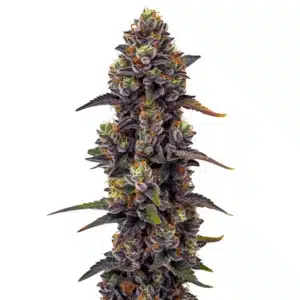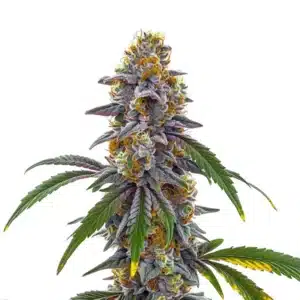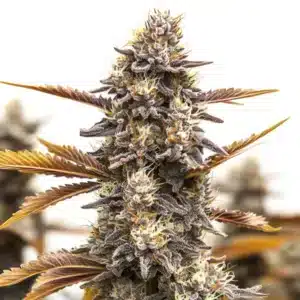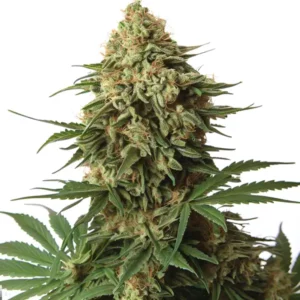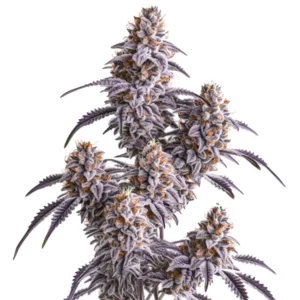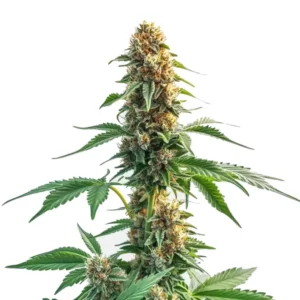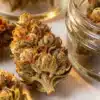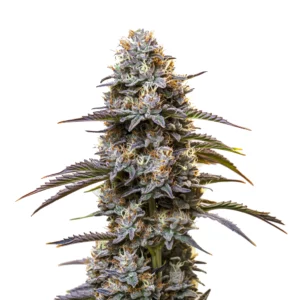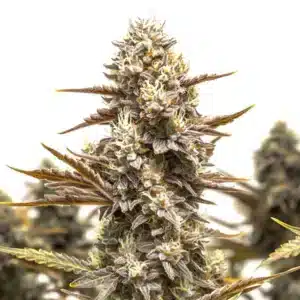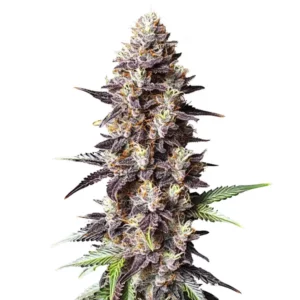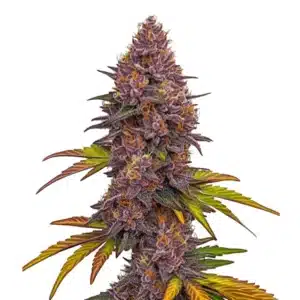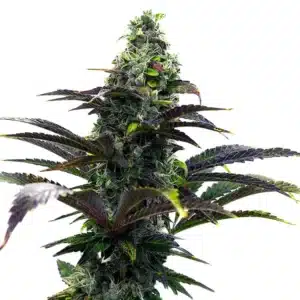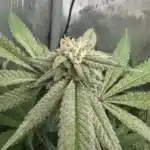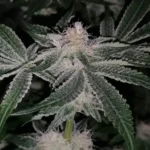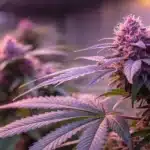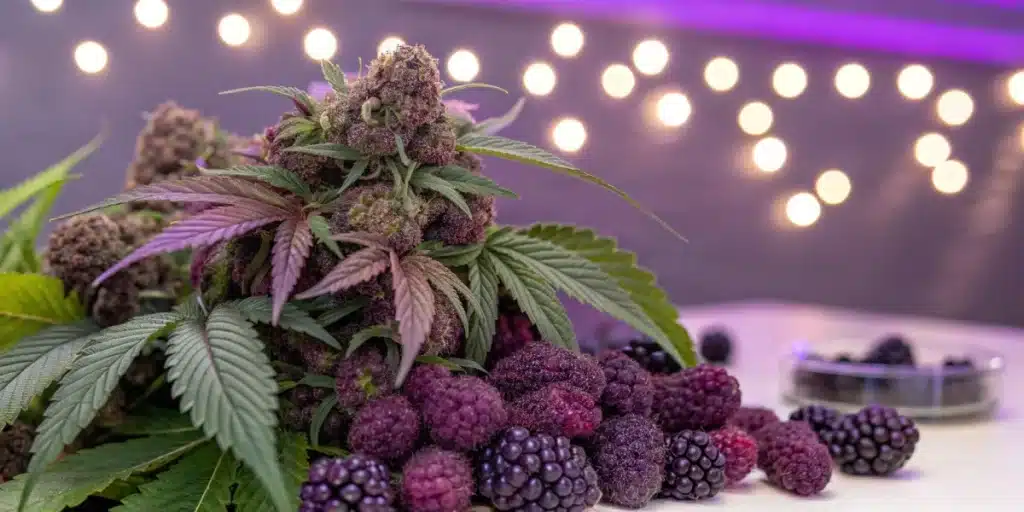
How to Grow Purple Urkle Weed Strain
Purple Urkle Weed Strain Description
Purple Urkle is primarily an indica strain, often classified as an indica-dominant hybrid with an approximate 80/20 indica-to-sativa ratio. Its deeply calming and soothing properties make it especially popular for nighttime use, ideal for those seeking full-body relaxation. So, if you’re wondering whether Purple Urkle is indica or sativa, it’s definitely more on the indica side.
Purple Urkle Strain is a visually striking and deeply relaxing variety known for its signature berry aroma and rich Californian heritage. This feminized strain descends from the legendary Mendocino Purps, a lineage that has earned numerous accolades over the years including multiple victories at the High Times Cannabis Cup alongside other icons like White Widow, Amnesia, and Blueberry. Emerging from a unique phenotype of Mendocino Purps, Purple Urkle Weed Strain carries the genetic power and sensory complexity that has made it a long-standing favorite among both recreational and medicinal users.
Recommended Strains
Purple Urkle
|
|
THC | 14% - 20% (Medium) |
|
|
Type | Feminized |
|
|
Yield | Medium |
|
|
Phenotype | 70% Indica / 30% Sativa |
Candyland
|
|
THC | 18% - 20% (Medium) |
|
|
Type | Feminized |
|
|
Yield | High |
|
|
Phenotype | 30% Indica / 70% Sativa |
With medium THC levels ranging from 14% to 20% and very low CBD (approximately 0.02%), Purple Urkle delivers a calming and sedative effect perfect for evenings. Its genetic makeup leans 70% Indica and 30% Sativa, providing full-body relaxation with a mild euphoric lift.
The buds feature dense structure, moderate resin coating, and stunning purple hues. Flavor-wise, expect a blend of berry, skunk, and earthy notes that linger on the palate. Terpenes like Beta-Caryophyllene, Limonene, Linalool, Myrcene, Para-Cymene, and Terpinolene contribute to the strain’s soothing qualities—supporting relief from insomnia, depression, and muscle spasms.
Promos & Deals
Growing Environment
Purple Urkle thrives in both indoor and outdoor setups, provided you maintain a clean, stable environment. Indoors, aim for temps between 70°F and 80°F (21°C–27°C) with cooler nights. During veg, humidity should be 60%–70%, and reduced to 40%–50% in flower to avoid mold.
Outdoors, plant in well-draining soil under full sun. Enrich the ground with compost or worm castings and consider adding a windbreak to shield plants. Steady airflow, humidity, and temperature control are essential to maximize yield and flavor.
Setting Up Your Grow Space
Purple Urkle Weed Strain Indoor Cultivation
Grow in tents or controlled rooms lined with reflective material. Use oscillating fans and an exhaust system with a carbon filter. Begin in small pots (soil pH 6.0–6.5), and transplant as roots develop. Ensure light is distributed evenly across the canopy for optimal photosynthesis.
Purple Urkle Weed Strain Outdoor Cultivation
Select a sunny, wind-protected site with organic-rich, well-draining soil. Use raised beds or large containers for better water management. Weed regularly, water consistently, and monitor for pests or mold, especially in humid climates.
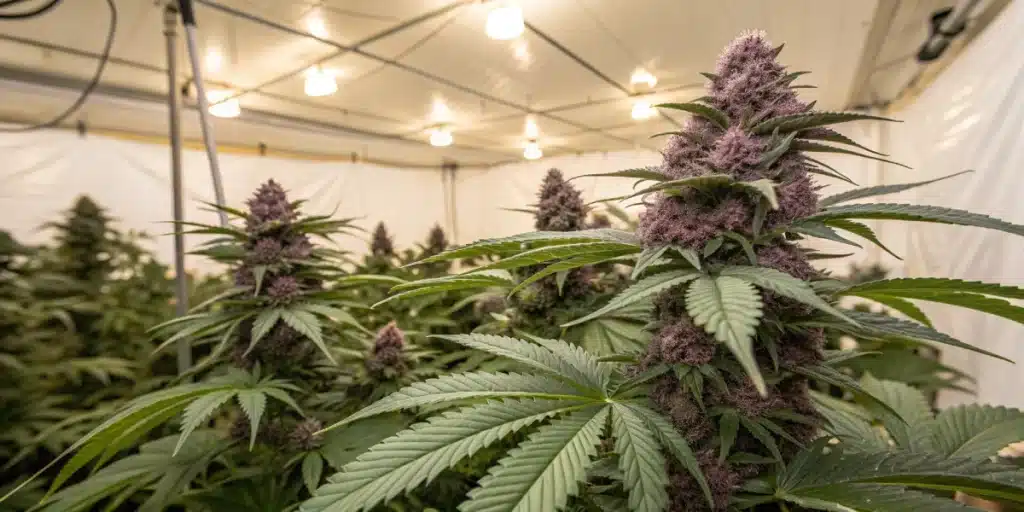
Seed Propagation and Germination
Begin with premium feminized seeds of Purple Urkle Weed Strain from a reputable supplier. Soak the seeds in distilled water or place them on a damp paper towel for 24-48 hours to soften the seed coat and trigger the taproot. Once a small taproot appears, plant the seed in a small container filled with a light, well-draining soil mix.
Keep the temperature around 75°F to 80°F (24°C-27°C) and maintain humidity between 60% and 70% until the seedlings develop their first true leaves. Gradually increase light intensity as the young plants grow, ensuring they receive sufficient energy to build a strong foundation for the later stages of growth.
Purple Urkle Weed Strain Vegetative Phase
During the vegetative stage, Purple Urkle Weed Strain grows quickly and establishes a solid structure. Provide 18-20 hours of light per day to promote vigorous leaf and stem development. Feed the plants with a nitrogen-rich fertilizer to support strong foliage. Active training techniques such as low-stress training (LST) or topping help shape the plants, ensuring that light reaches every part of the canopy.
Keep a close eye on temperature, humidity, and watering practices. Consistent care during this phase sets up your plants for a smooth transition into flowering, ultimately leading to a more robust and productive y.
Purple Urkle Weed Strain Flowering Phase
Switch to a 12/12 light cycle. Purple Urkle forms dense, resin-heavy buds with signature berry and skunk aromas over 8–10 weeks. Lower temps to 65°F–75°F and humidity to 40%–50% to prevent mold. Boost phosphorus and potassium, and avoid excessive nitrogen, which hampers bud formation. Increase airflow and support heavy branches with stakes or trellises.
Fertilization and Nutrition
Proper nutrition is a cornerstone of successful cultivation. Start with a nitrogen-rich fertilizer during the vegetative stage to build strong leaves and stems. Once your plants enter flowering, switch to a nutrient mix high in phosphorus and potassium. Maintaining a stable pH between 6.0 and 6.5 helps the roots absorb nutrients efficiently. Many growers also add organic supplements such as compost or worm castings to further enrich the soil and improve both yield and flavor.
Keep a regular schedule for watering and nutrient feeding, and adjust as needed if you notice signs of stress. Active nutrient management ensures that your Purple Urkle plants remain healthy and produce quality buds throughout their life cycle.
Pest and Disease Control
Keep your grow space clean and inspect your Purple Urkle plants daily for signs of pests like spider mites, aphids, or thrips. Use organic treatments such as neem oil at the first hint of an infestation. Good airflow and prompt removal of dead leaves help reduce the risk of fungal diseases. If you observe any signs of mold or mildew, quickly remove the affected sections and adjust the humidity levels in your grow area.
Active and regular monitoring helps you catch problems early and minimizes the risk of a major outbreak, ensuring your crop remains healthy and vigorous.
Purple Urkle Weed Strain Harvesting and Curing
When most trichomes on your Purple Urkle buds turn milky with some amber, it’s time to harvest. Use clean, sharp tools to carefully trim the branches. Dry the buds in a dark, well-ventilated area where the temperature remains between 60°F and 70°F, and ensure enough space for air to circulate freely.
Once the buds are dry, place them in airtight glass jars and open the jars daily during the first week to release excess moisture. Let the buds cure for 2-4 weeks to refine flavor and potency. This active curing process enhances the strain’s relaxing effects and preserves its unique flavor of berry, earthy, and skunk notes.
Purple Urkle Weed Strain Indica or Sativa?
Purple Urkle Weed Strain leans 70% Indica and 30% Sativa, making it mostly Indica. It delivers a strong, relaxing, and often sedative experience. The calming and sleepy effects are ideal for relieving depression, insomnia, and muscle spasms while providing a deeply relaxing body high. This balance makes it particularly suitable for evening use or for those seeking relief from stress.
Advantages and Disadvantages
Advantages: Purple Urkle produces attractive, resinous buds with a distinctive berry, earthy, and skunk flavor. It grows well both indoors and outdoors, offers a calming and relaxing high, and helps relieve depression, insomnia, and muscle spasms. Its manageable growth and moderate yield make it ideal for beginners.
Disadvantages: Its delicate flavor profile requires precise nutrient and environmental management. The yields are moderate, and the plant may need extra support during flowering due to its relatively compact size. Beginners must monitor factors closely to avoid issues like mold or nutrient imbalances.
Why Buy Purple Urkle Weed Strain
Choose Purple Urkle Weed Strain if you are looking for a strain that provides a strong and relaxing experience with a unique flavor profile. Its calming and sedative effects, combined with relief from insomnia and muscle spasms, make it an attractive option for both recreational and medicinal users. Trusted suppliers often offer quality genetics that promise consistent performance, making it perfect for beginners and experienced growers alike.
Common Growing Problems
Monitor your plants regularly for nutrient imbalances, overwatering, or pest infestations. Inconsistent environmental conditions such as fluctuating temperature or humidity can stress the plants and reduce yield. Quick, proactive management like adjusting light cycles, nutrient levels, or improving airflow will help keep your Purple Urkle crop healthy and productive.
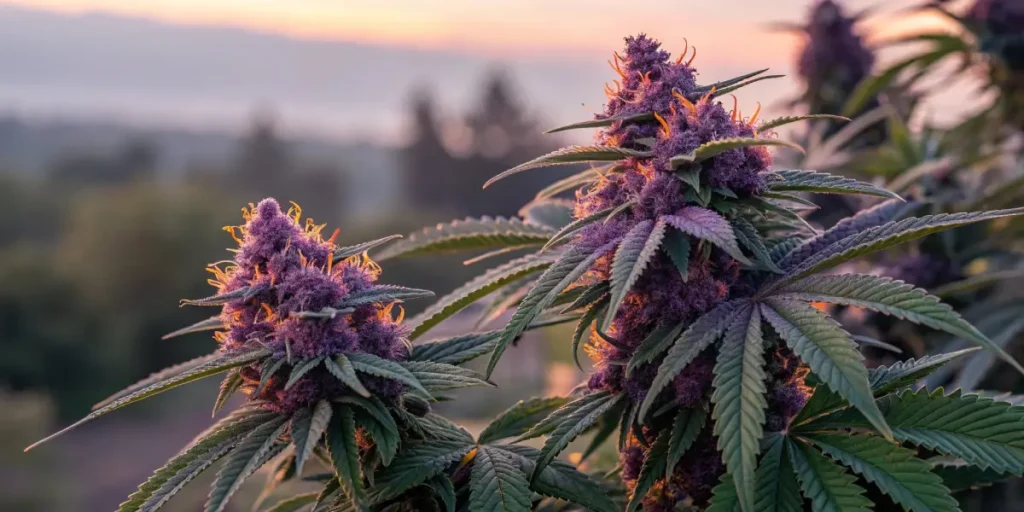
Similar Strains
Granddaddy Purple
Granddaddy Purple is known for its deep purple hues and potent sedative effects. It also offers a rich, fruity flavor and is favored for its relaxing high, making it a good alternative for those who appreciate Indica-dominant strains.
Blueberry
Blueberry is celebrated for its sweet, fruity aroma and calming, soothing effects. Its robust genetics and consistent yield make it a popular choice for growers who enjoy a strain with similar flavor notes to Purple Urkle.
Tips for Professionals
Advanced growers use digital timers, sensors, and organic supplements to fine-tune their growing environment. Keeping detailed logs of light cycles, nutrient adjustments, and environmental conditions allows for quick improvements. Experiment with training methods like low-stress training (LST) and topping to enhance canopy structure and promote better light distribution. This hands-on approach ensures consistent yields and helps maintain the unique flavor profile of Purple Urkle.
FAQs About Purple Urkle Weed Strain
What makes Purple Urkle Weed Strain unique?
Purple Urkle stands out with its strong, relaxing effects and distinctive berry, earthy, and skunk flavor. Its mostly Indica genetics offer a calming, sedative high that makes it ideal for relieving depression, insomnia, and muscle spasms.
How long does it take to flower?
Purple Urkle typically flowers in 8-10 weeks, allowing it to produce dense, resinous buds that capture its characteristic flavor and potent effects.
Can it be grown outdoors?
Yes, Purple Urkle grows well outdoors in sunny, well-draining soil enriched with organic matter. Regular care and wind protection help ensure a steady yield.


